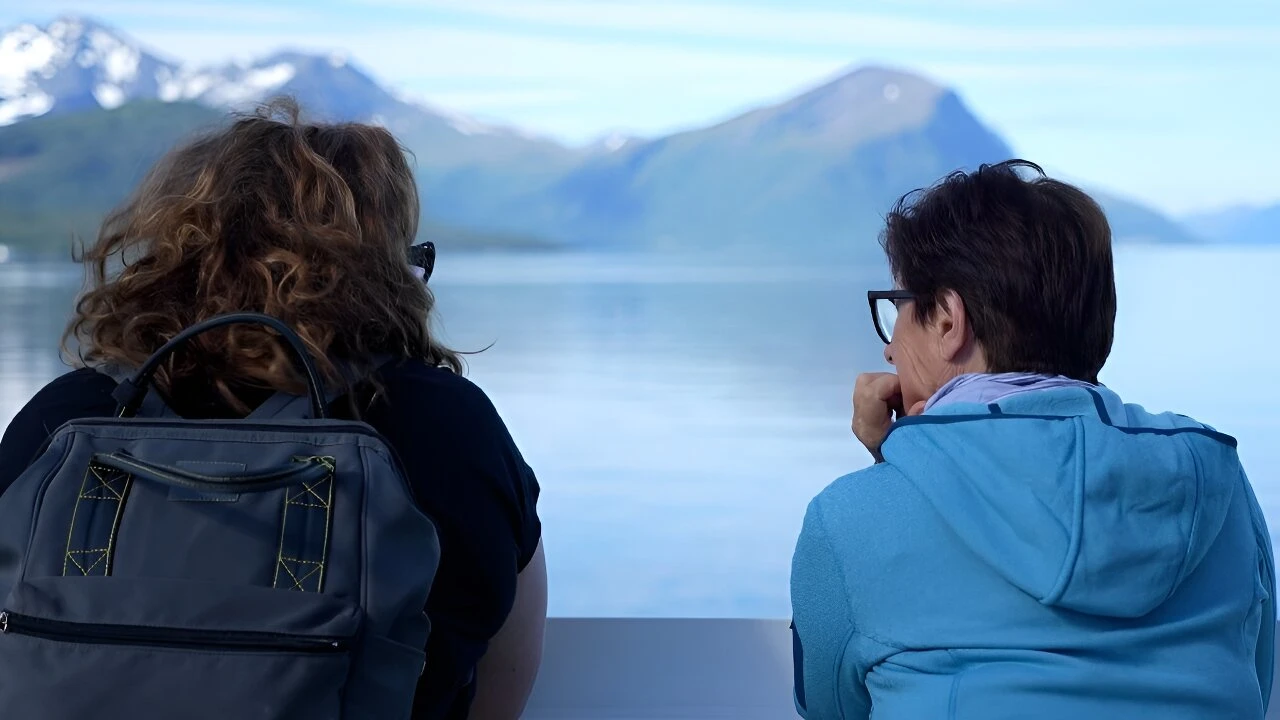Tourists seek out Nordic holidays to keep cool

Stay tuned with 24 News HD Android App

Far from her home in the tourist hotspot of Tenerife, Cati Padilla is one of the growing number of travellers escaping heatwaves for cooler holidays in Nordic countries.
Countries like Norway and Sweden in northern Europe are now promoting "coolcations" to attract visitors to their temperate climates.
Why leave the Canaries in summer? "To escape the heat," said Padilla while on holiday with her friends.
"Norway attracted our attention a long time ago because of the green landscape, the mountains and the ice," added the civil servant in her fifties on the so-called "troll path", a serpentine mountain route towards the fjords.
In 2023, foreign overnight stays rose by 22 percent in Norway and 11 percent in Sweden according to official statistics, mainly driven by the end of Covid-related restrictions in 2022 and a slump in Scandinavian currencies.
But a survey in Germany for tourist organisation Visit Sweden also found that two out of five people plan to change their travel habits due to the southern European heat, opting for different seasons or cooler destinations.
"Coolcation is not just about the weather," said Susanne Andersson, head of Visit Sweden. "It's about travelling to places where it's a little bit cooler both in the weather but also cooler in the sense of not that many people."
For some people, gone are the overcrowded Mediterranean beaches and heatwaves causing forest fires and the partial closure of the Acropolis in the Greek capital in June.
Nowadays, many prefer to take a dip in a lake or a fjord, or fill their lungs with fresh air on a mountain hike in relative isolation.
Killer summer
When British tourist Pam disembarked from a cruise ship on the majestic Geiranger Fjord, a UNESCO World Heritage site, she expected to find cool weather.
But she found herself in sandals and a t-shirt, rather than the raincoat and woollen clothes she packed.
"It's been wonderful," said the resident of Lichfield city in west-central England. "It's still not that hot that you can't walk."
"It just does not interest me now to sit on a sunbed, read a book, get up, go and have something to eat and come back to the sunbed. I'd rather visit places, find the history and just look at beautiful places."
The frequency and intensity of extreme heat events and the duration of heatwaves have "almost certainly" increased since 1950 and will continue to do so with global warming, according to UN climate experts.
By 2050, half of Europe’s population could face high or very high risk heat stress in summer, with heat-related deaths potentially doubling or tripling with temperature rises of between 1.5 degrees Celsius (34.7 degrees Fahrenheit) to 3C.
"Spain is a no. Greece is a no," said 74-year-old French pensioner Gerard Grollier, as he disembarked from a coach in Geiranger village in western Norway.
Why Norway? "The climate is much more pleasant," explained his daughter, Virginie, a financial adviser. "We have not protected our planet, and now that is impacting tourism."
Submerged villages
The capital of Lapland in northern Finland, Rovaniemi, recorded a 29 percent jump in overnight stays last year.
"You can feel the 'coolcation' here, the trend started years ago but it has increased with the hot summers in southern and central Europe," said Sanna Karkkainen, who promotes tourism in Rovaniemi.
The coolcation influx has its issues, including a surge in Airbnb properties and unruly tourists.
"Our main concern is to have too many people at the same time," emphasised Jan Ove Tryggestad, former mayor of a Norwegian village where a cruise ship carrying 6,000 passengers and 2,000 crew members had just docked.
"It's a small village here. In Hellesylt, there are between 280 to 300 winter inhabitants. Obviously it's a bit of a culture shock when suddenly a small town, by European standards, turns up," he added. "But we adapt."
